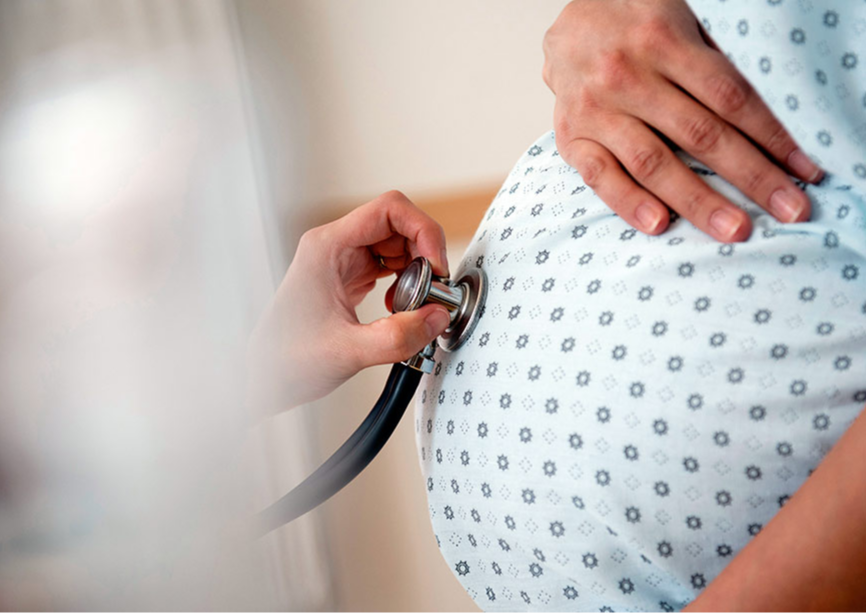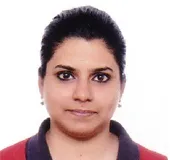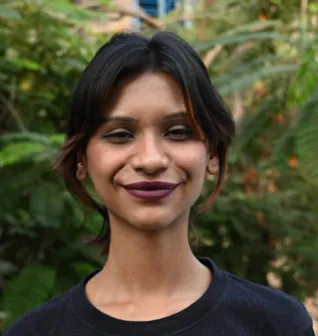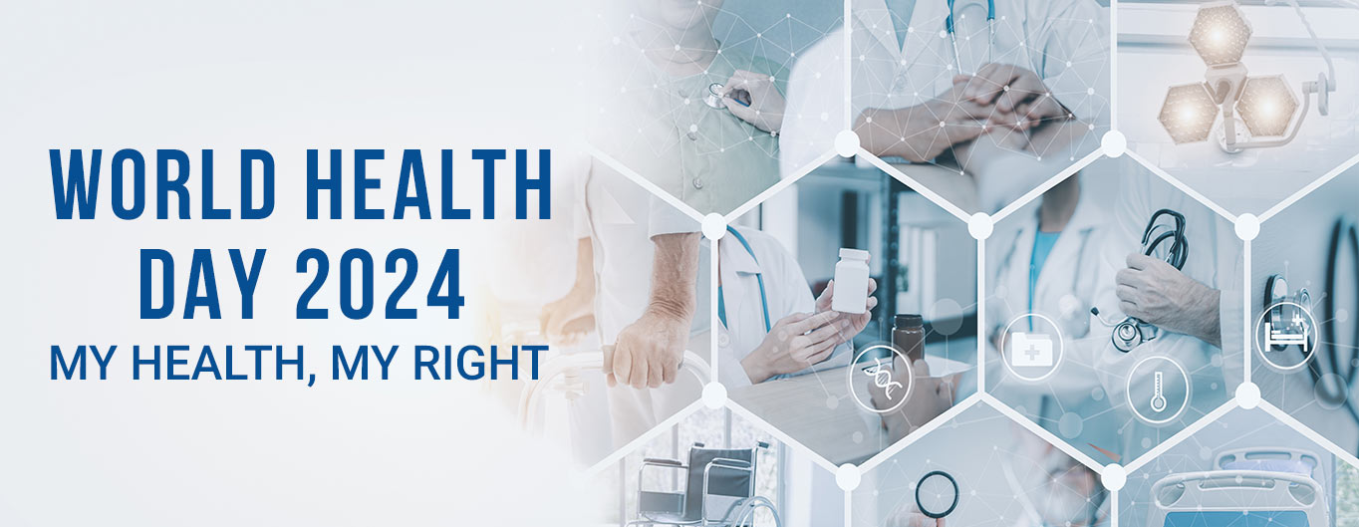
This essay is part of the series titled: World Health Day 2024: My Health, My Right
The conundrum of maternal health
With approximately 800 women losing their lives daily due to pregnancy or childbirth-related complications, maternal mortality is a critical global concern. The maternal mortality ratio (MMR) serves as a key indicator, representing the number of maternal deaths per 100,000 live births within a specific time frame. Despite a slight decline in the global MMR from 2015 to 2020 (see Figure 1), dropping from 227 to 223 deaths per 100,000 live births, it still exceeds the target set by SDG 3.1 by threefold. Most alarming is the concentration of nearly 95 percent of maternal deaths in low and lower-middle-income countries, of Sub-Saharan Africa and Southern Asia.
Figure 1: Maternal mortality ratio and average annual rate of reduction region-wise (2000-2020)

Source: WHO
Addressing MMR is crucial not only for achieving SDG 3 (Good Health and Well-being) but also for its intersection with other sustainability targets. It serves as a critical cross-cutting element that goes beyond health metrics. For instance, MMR intersects with SDG 1 (No Poverty) as high healthcare costs can drive individuals into extreme poverty, leading to reduced utilisation of maternal healthcare services. Additionally, addressing maternal health aligns with SDG 2.2, which aims to meet the nutritional needs of pregnant and lactating mothers. Further, ensuring access to maternal healthcare services aligns with SDG 5 (Gender Equality), particularly in achieving universal access to sexual and reproductive health and rights as outlined in target 5.6. Thus, reducing MMR not only contributes to improving maternal health outcomes but also advances progress towards the larger sustainable well-being of the community.
Global development partnerships on Maternal, Newborn and Child Health (MNCH)
From 2017 to 2021, Official Development Assistance (ODA) allocated to MNCH remained steady at approximately US$10 billion. However, the proportion of ODA and global health ODA designated for MNCH declined in 2020 and 2021 due to redirected funding towards the COVID-19 response, this was however expected to scale up post-2023. In 2021, 42 percent of the ODA came from multilaterals, with top donors such as GAVI, the World Bank IBRD, and the World Bank IDA. Bilateral contributions constituted 53 percent of the total ODA allocated to MNCH, inclusive of funding channelled through multilateral organisations. The United States (US) remained the largest donor, contributing 29 percent of total development assistant committee (DAC) funding to MNCH. Germany, the European Union Institutions (EUI), and Japan collectively accounted for an additional 31 percent of bilateral MNCH funding. France has significantly supported MNCH in Africa through the establishment of the French Muskoka Fund.
Bilateral contributions constituted 53 percent of the total ODA allocated to MNCH, inclusive of funding channelled through multilateral organisations.
With the rising prominence gained by Southern-driven partnerships, it is imperative to channelise the existing resources and find new pathways for addressing the issues of MNCH. For instance, China has significantly extended its development support for MCH through China’s South-South Cooperation Assistance Fund (SSCAF). Notably, its partnership with African countries underscores this commitment, as demonstrated by a recent US$ 1 million donation to UNICEF aimed at enhancing MCH efforts in countries like Niger, which further deepens their diplomatic ties with Sub-Saharan African countries. On the other, traditional donors like the Japan International Cooperation Agency (JICA), the United States Agency for International Development (USAID), the EU’s Directorate General for International Partnerships (DG INTPA), Deutsche Gesellschaft für Internationale Zusammenarbeit (GIZ), and the French Development Agency (AFD) have been focusing on improving access to quality health services for both mothers and children. Projects on MCH spread across Bangladesh, Cambodia, Indonesia, Laos, Thailand, Philippines etc. In 2019, JICA released a one-of-a-kind handbook for spreading awareness and fostering discussions on universal health coverage. As per JICA Sustainability Report 2023, it has distributed about 9 million copies in 34 countries where it is actively engaged. For the financial year 2020, USAID allocated US$ 874 million for MCH, a slight increase from the 2019 allocation of US$ 849 million. The EU initiated the Nutrition for Development (N4D) programme to combat all forms of malnutrition in its partner countries by formulating a comprehensive approach between the EU Commission and the EU Member States. In 2021 at the Tokyo Nutrition for Growth Summit, the EU Commission pledged about EUR 2.5 billion for the period 2021-2024.
India & South-South cooperation on MCH
India has made significant progress in maternal and child health (MCH) metrics and remains on track to achieve the SDG 3.1 target of an MMR of 70 per lakh live births by 2030. Programmes like the Pradhan Mantri Surakshit Matritva Abhiyan (PMSMA) launched by the Ministry of Health and Family Welfare, and Janani Shishu Suraksha Karyakaram (JSSK), the Indian government extends access to free antenatal care and maternity services to scale-up the nationwide health system. With India’s assumption as the voice of the Global South, its progress in MMR and MCH can serve as a blueprint for other developing countries. New Delhi can share its best practices with the vulnerable regions in the Global South facing similar challenges. Through the Indian Technical and Cooperation Programme (ITEC), India is known for fostering collaboration and cross-border knowledge-sharing, in this case, it can feasibly accelerate efforts towards MCH globally.
India has made significant progress in maternal and child health (MCH) metrics and remains on track to achieve the SDG 3.1 target of an MMR of 70 per lakh live births by 2030.
Moreover, India’s progress on MNCH has been recognised and is being leveraged, particularly through triangular cooperation initiatives. For instance, the Norway-India Partnership Initiative (NIPI), aims to reduce maternal, newborn, and child mortality in India through India’s successful National Health Mission (NHM). Following two successful phases, Phase 3, facilitated by a Memorandum of Understanding (MoU), will expand to aspirational districts and establish an innovation hub which would further bolster best practices to other developing nations in the Global South. Additionally, the US-India-Afghanistan Triangular Cooperation on Maternal and Child Health (MCH) facilitates the transfer of Indian innovations and best practices in family planning and MCH to select African and Asian countries, with a primary focus on Afghanistan.
In terms of India’s own bilateral partnerships, the Ministry of External Affairs (MEA) has allocated INR22,154 crore for the fiscal year 2024-25, under its ‘neighbourhood first’ policy. This underscores its commitment to power bilateral development partnerships with countries in its own backyard, with health being a priority. Despite being a prominent development partner in health, its interventions have largely focused on exporting high-quality pharmaceuticals and medical supplies, as well as establishing healthcare infrastructure abroad. However, India’s development interventions on MCH remain relatively minor. By underlining the concerns of the vulnerable geographies during its G20 Presidency, India must positively and proactively utilise this momentum and bring global attention towards garnering viable partnerships to create an enabling environment for MCH worldwide.
Swati Prabhu is an Associate Fellow with the Centre for New Economic Diplomacy (CNED) at the Observer Research Foundation
Sharon Sarah Thawaney is the Executive Assistant to the Director at the Observer Research Foundation, Kolkata
The views expressed above belong to the author(s). ORF research and analyses now available on Telegram! Click here to access our curated content — blogs, longforms and interviews.





 PREV
PREV




